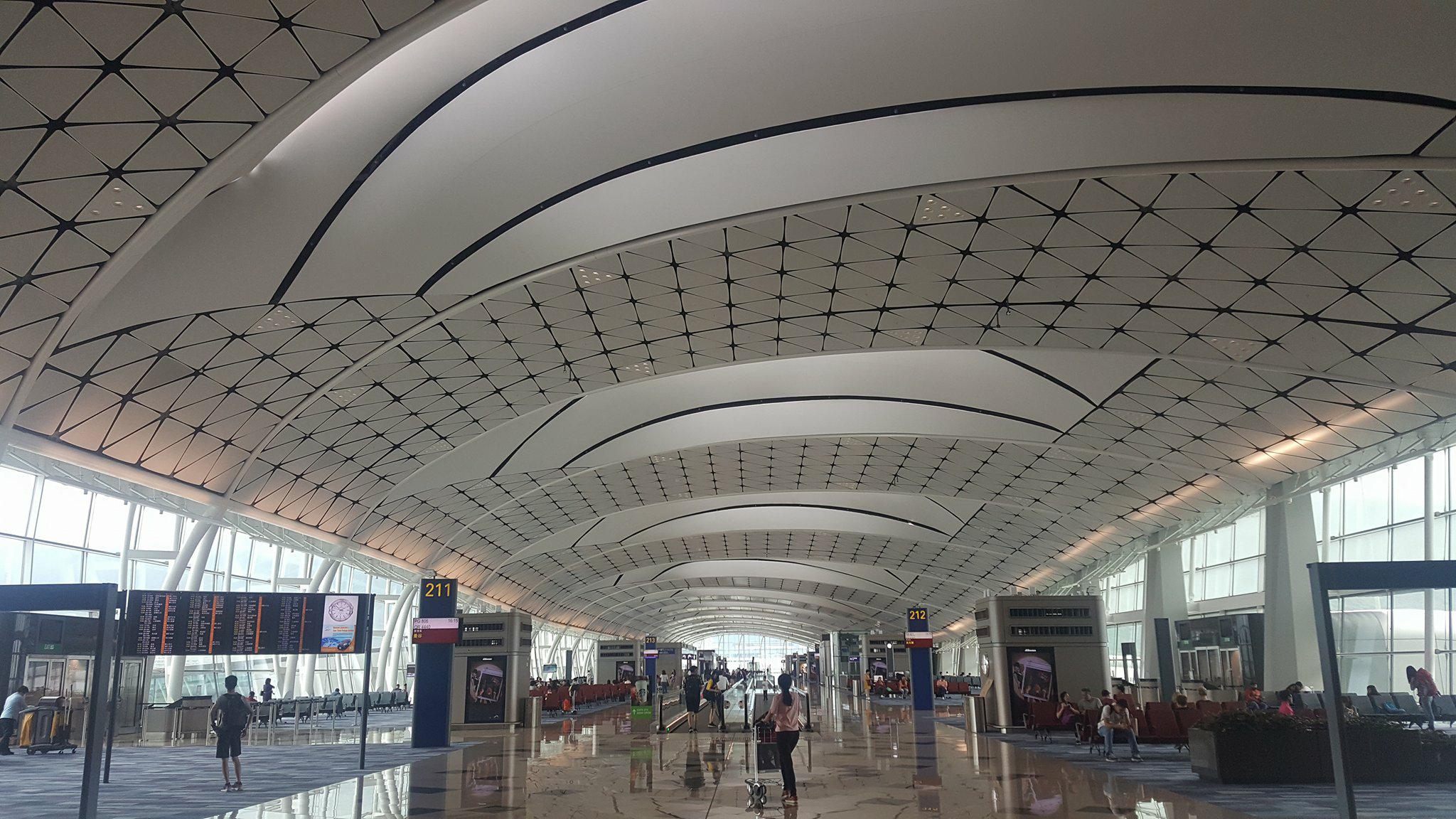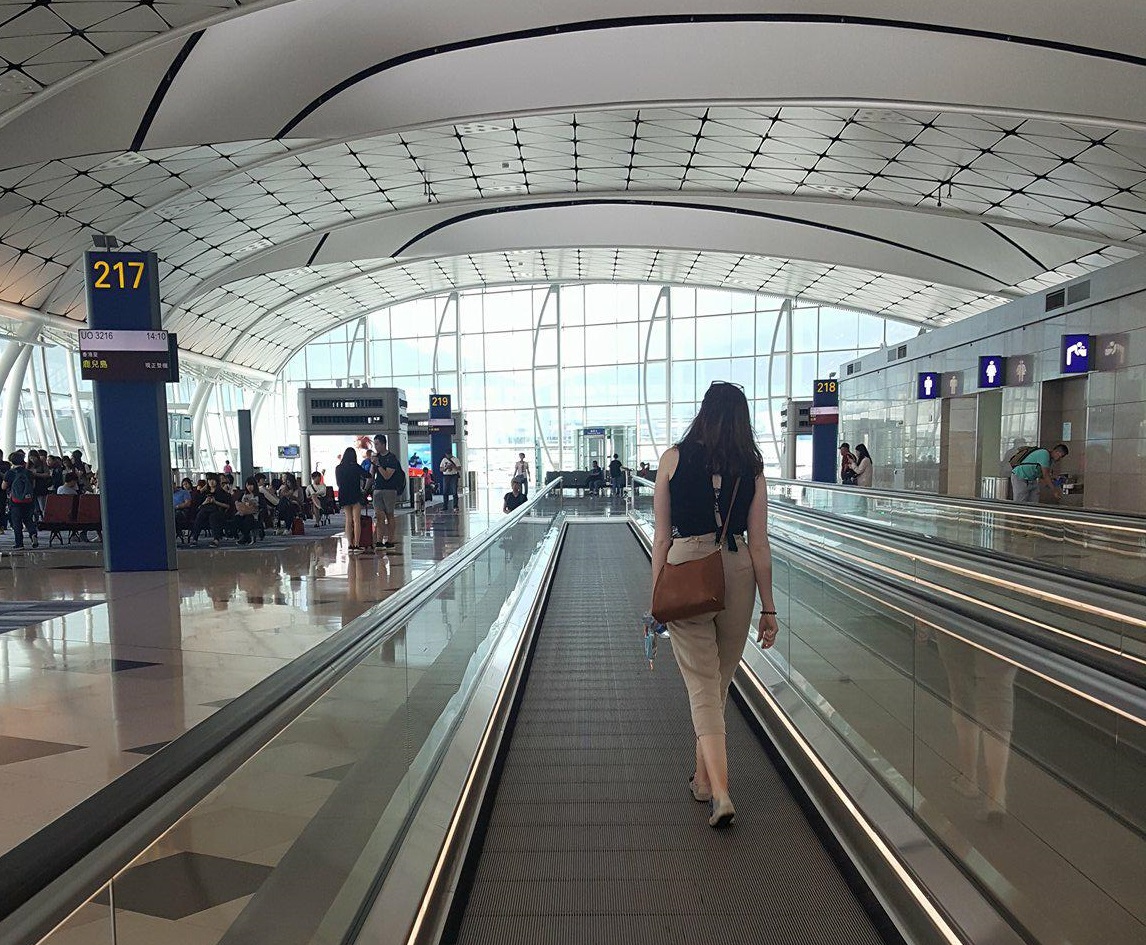Annie Pennington from the UK shares her experience of flying in China and her top advice for how you can avoid a Chinese airport horror story.
Flying from Hong Kong to Beijing
I was flying from Hong Kong to Beijing, and thought I had it all figured out.
Chinese Visa at the ready, my Mandarin ‘Hello’ and ‘Thank you!’ on the tip of my tongue, and photocopies of my hostel booking, passport, travel insurance and flight ticket all secured in my ever-fashionable bum bag.
But while in Hong Kong, I had met a lot of people who warned me that Chinese airspace is incredibly congested, and to expect a delay.
Expect Delays
I continually checked my phone for any text alerts or changes to my flight, but arrived at the airport with my flight still (supposedly) on time. I checked in, had some food, and went to wait at the gate with an hour until take-off; still, with my flight “on-time”.
At this point, I was unaware that at Beijing Airport, nearly 40% of flights are delayed.

Hong Kong airport is pretty and everything, but I spent my last Hong Kong Dollar on a weird can of bamboo fizz and now I wanted to leave
With half an hour to go, my flight was pushed back 10 minutes. Compared to horror stories I had heard, this was fine. 20 minutes later, it was delayed a full half hour. Annoying, but still fine. Half an hour after this, it was delayed a full hour.
I looked around, expecting to see angry faces, hear groaning, or at the very least spot a few eye rolls. Nothing. It seemed perfectly normal to the majority of my fellow passengers.
The flight staff began handing out snacks and bottles of water. Nice touch, but not quite enough to alleviate the sinking feeling I was beginning to get.
Arrival In Beijing: Be Patient & Prepared

Around ninety minutes behind schedule, we were escorted onto the plane – where we were promptly told there would be a five hour wait on the tarmac.
We were given two extra hot meals during this time, and pretty much endless (and admittedly yummy) snacks. But by the time we finally touched down in Beijing, it was 1am, and the train that I was planning on using to travel into the city had stopped running at midnight.
I felt a little lost, and a little let down by Beijing already.
Get Official Taxi's on Arrival
China is pretty notorious for its fake taxis; very official looking people will ambush you after you’ve collected your luggage, and ask if you need any help.
Make sure to check for a lanyard with an official airport ID badge to avoid them. They try to usher you into a taxi which will cost 10 times the price of an official taxi.
So, although the size of the queue at the taxi rank looks daunting and something to avoid, this is how you know you’re getting into an official taxi.
Make Sure Your Driver Knows Where to Go
I braved this queue, battled for half an hour with the taxi driver over him not wanting to take me into the centre of Beijing (my saving grace here was having a printed map with both English and Mandarin translations on), and finally set off.
I still wasn’t 100% sure he was taking me to my hostel, and sure enough: he pulled up, I paid (it was very cheap, under £3 for a 30-minute journey), and realised I was not where I needed to be.
Take a Map
I resorted to Google Maps, and set off in the general direction of my hostel, knowing it was going to be about an hour’s walk if I didn’t find another taxi soon.
But none of the roads I was supposedly passing seemed to line up with the map on my phone. And the little blue dot, that showed me just how insignificant I was in this huge city, was going mental.
Luckily (my first stroke of luck this evening) I heard a couple speaking English as I passed a bar (I was making sure to stay in well-lit areas where possible). I ambushed them.
“Oh thank God, can you help me?! Do you know where Donghzimen Station is?”
I had hit the jackpot. They were lovely, spoke English and Mandarin, and promptly reassured me and put me on a tuk-tuk with the promise of arriving within 10 minutes. I was beyond relieved. And what was even more useful was their parting gift to me: “Google – including Google Maps – doesn’t work in China.”
Top Tips
If you are planning on flying internally within China, I’ll make sure to get a very early flight (or the train; Chinese rail service is supposedly much more reliable) so as not to arrive in a foreign city in the dark, with transport links finished for the night, without Google Maps.
By Annie Pennington
If you would like to travel to China the following pages will be useful to you:
- Budget tours of China
- Jobs in China for English speakers
- How to volunteer in China
- Guide to teaching English in China
- China gap year ideas







